Find Out About is a book series by Martin Jenkins with illustrations by Jane McGuinness that focus on certain aspects or characteristics of animals.They’re soft, entry-level books about Animal Babies, Animal Homes an Animal Camouflage, with the fourth book being, Animal Tools. All of these use the same gentle, easy-to-follow nature book template that shows young ages an example, and uses font in two different sizes to drive it home. It’s a read-aloud book that will keep those pre-K kids quiet and the K and first grade students chiming in with their own examples of animal tools.
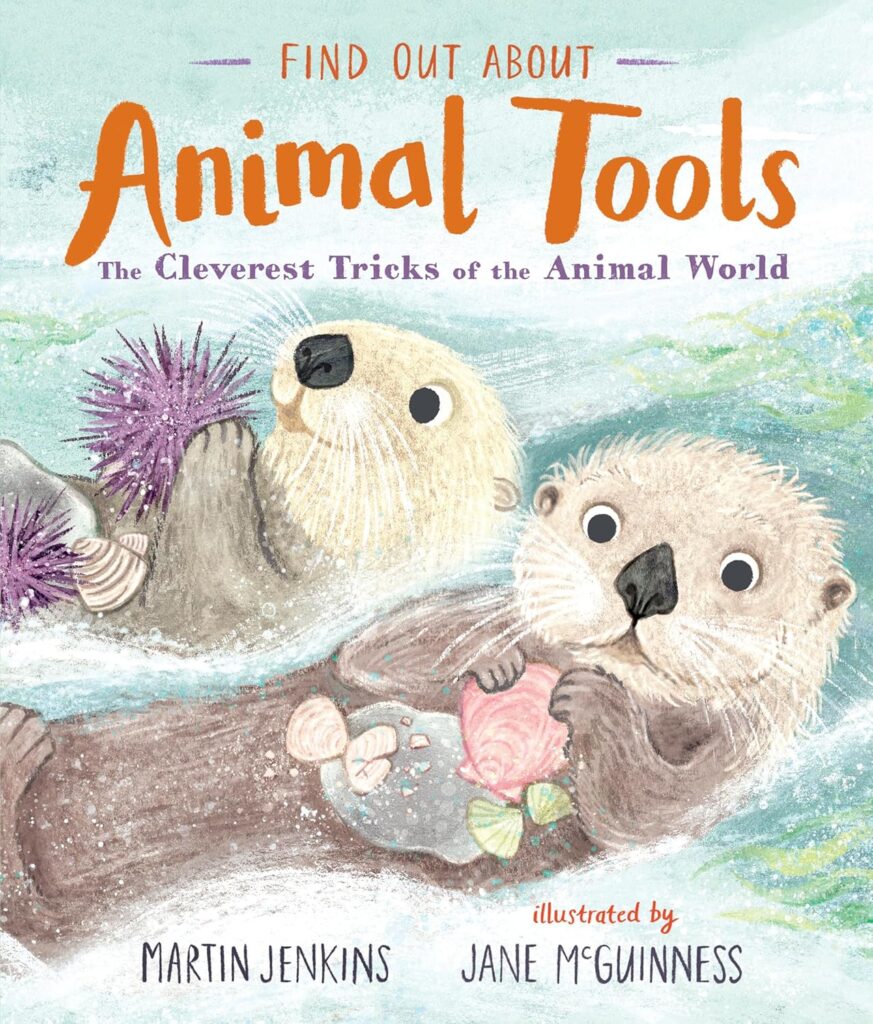
They’re low-tech examples of tools that animals use, in order to get food or obtain shelter, with some of their actions being quite human-like. The Tailorbird is a rather cute member on the ornithology team that uses its beak to sew a cocoon in which their babies stay until they’re old enough to leave the nest. This cup shape allows the babies to watch television and whine for their tablets, all the while being relatively hidden from predators looking for a quick meal. The Mugger Crocodile places some sticks on their noses during nesting season. That way, when herons, egrets or other birds that you see when you visit the coast attempt to pick up those sticks it’s a quick meal for the reptile. They’re using their snout as a tool to hold the sticks and the birds are using their beaks as a needle to make the bird pockets. Those two critters are just using the tools that they were given in order to do what’s best for their species.
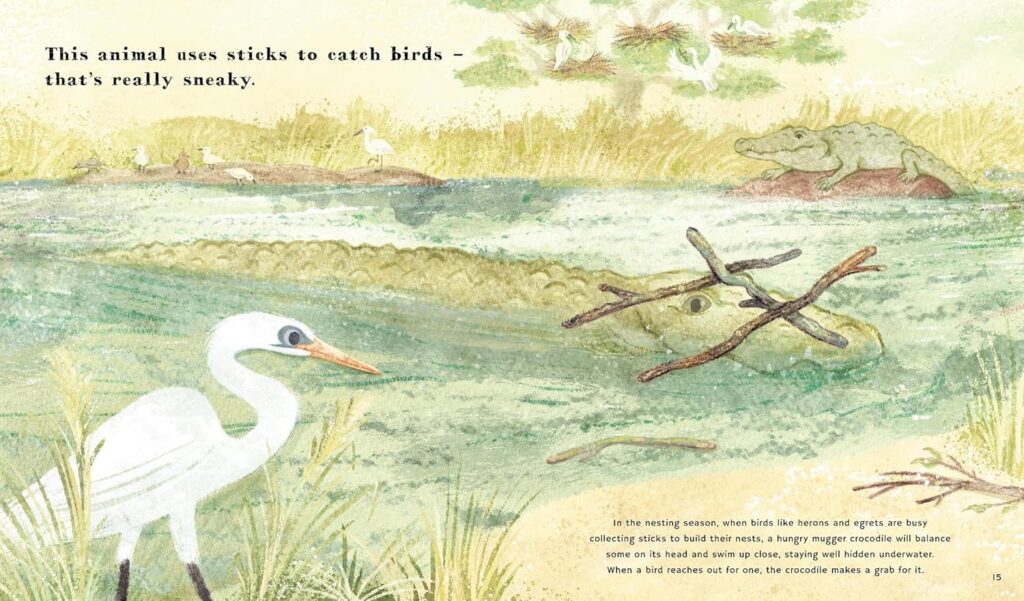
Each animal is introduced with a simple sentence that provides an overview of what they are doing. That sentence is embedded in the illustration that infers what the more detailed, complex, compound or multiple sentences on the opposite side of the page says. These sentences are meant to be read aloud and have vocabulary that’s probably not something early elementary school students will be able to understand.
That’s ok because that first bit of text treats those ages where they are, and the second area of text aims for where the students will be. Those young ages will practice trying to say the words themselves and digging into sight words that they’re learning. The illustrations offer context clues that make the entire process go around and organically lead the conversation to other animal tools not listed in the book. It’s those conversations that demonstrate to kids the fun, and unexpected ease of building their critical thinking skills.
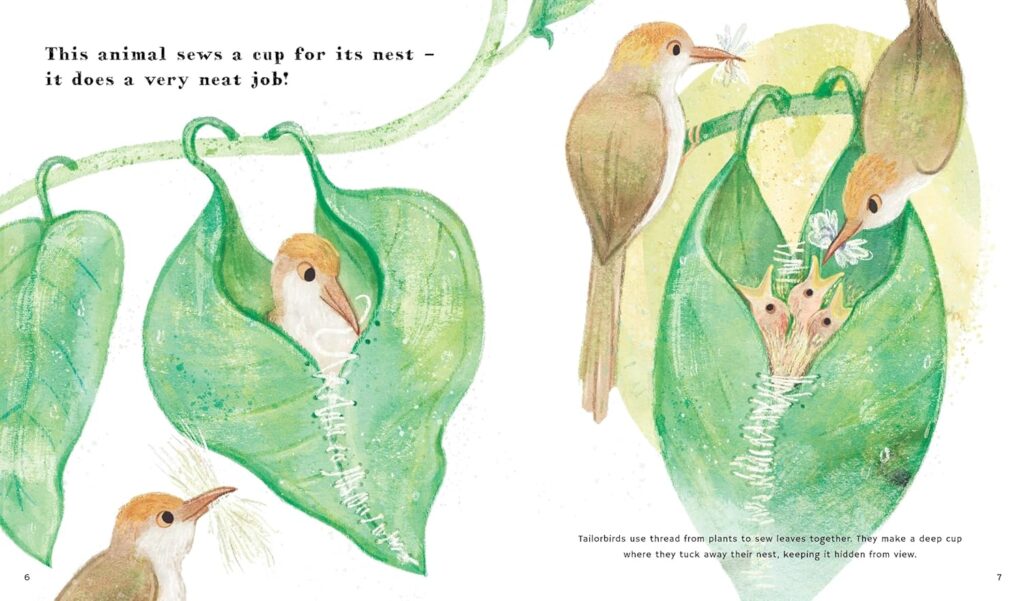
The Archerfish uses the water it shoots from its mouth to knock down insects from their lofty spot in the sky, to the more waterborne area where they can be promptly eaten. They use the water as a tool that effectively gives them another avenue to find food from. New Caledonian Crows use twigs or leaves as hooks that they insert into tree holes to find grubs. The later animal also shows the crow making the tool that it uses to fish out its food. At the end of the book, Animal Tools points that the animals that use tools the most are humans, specifically you, meaning the reader.
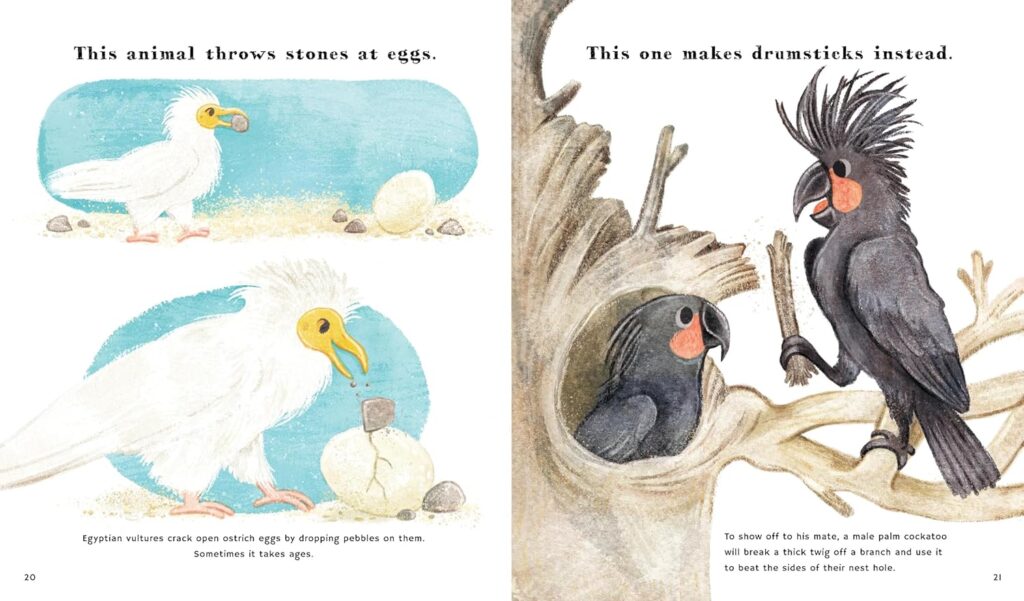
The illustrations are beautiful and engaging, the text is short and builds upon itself, and the combination is a book that’s great for early-elementary story time, but also builds to questions and answers that those ages so desperately want to share.
Find Out About: Animal Tools is by Martin Jenkins with illustrations by Jane McGuinnes and is available on Candlewick Press.
There are affiliate links in this post.

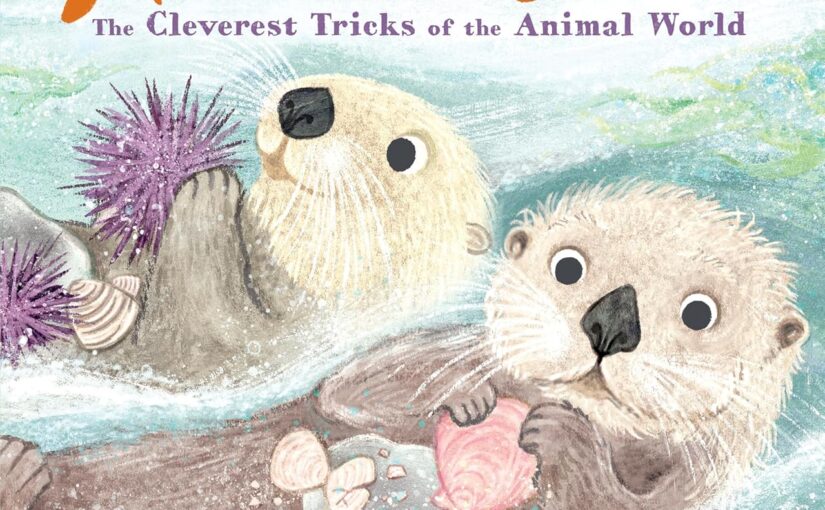



 Facebook
Facebook Twitter
Twitter Flickr
Flickr GooglePlus
GooglePlus Youtube
Youtube